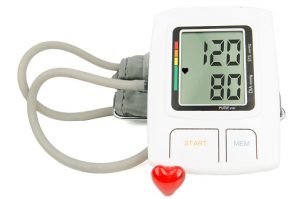
Effects of high blood pressure
Hight blood pressure affects nearly 75 million Americans today, with only about half of them having their condition under control.
“High blood pressure is the number one cause of death and disability in the world. Monitoring for and treating hypertension can decrease the consequences of this disease. We need to make sure that home blood pressure readings are accurate,” said medical researcher Jennifer Ringrose, who led the research study.
One of the most problematic features of high blood pressure is that people may go years without experiencing any symptoms. Instead, their body is unknowingly being damaged each day due to the force put on the blood vessels. It is only through regular doctor visits that people safely discover they have hypertension, as more often than not, a heart attack or stroke can be the first presenting symptom.
Testing the devices
The first part of the study involved testing dozens of home blood pressure monitors. The researchers found that 70 percent of them were not accurate within 5mmhg. The devices were also found to be off by 10mmhg about 30 percent of the time.
While the number may seem small, they are significant in the eyes of doctors. Most patients are asked to record at-home blood pressure on a regular basis and report those findings. Inaccurate reading can impact treatment and patient outcomes.
What you can do to get accurate readings
The researchers recommend several measures to ensure they are obtaining accurate readings.
“Compare the blood pressure machine measurement with a blood pressure measurement in clinic before exclusively relying upon home blood pressure readings. What’s really important is to do several blood pressure measurements and base treatment decisions on multiple readings. Taking home readings empowers patients and is helpful for clinicians to have a bigger picture rather than just one snapshot in time,” advises Ringrose.
It is important to keep in mind that these machines may find it difficult to interpret accurate results from general use. Factors such as arm size, arm shape, and size of the blood pressure cuff used all matter when measuring blood pressure.
Related: Older methods of diagnosing high blood pressure may be inaccurate